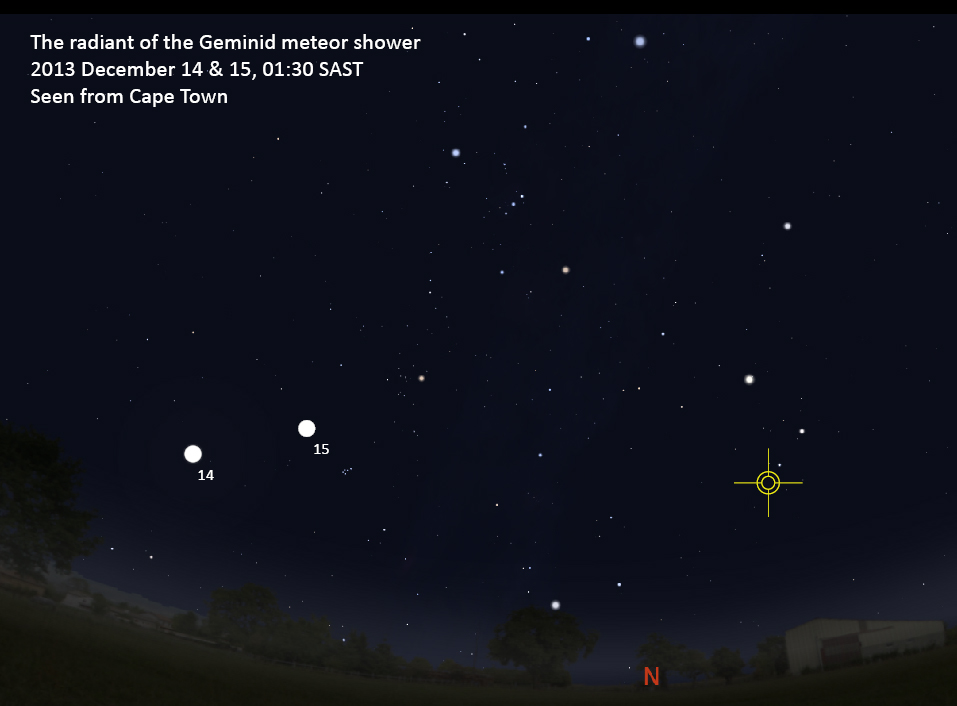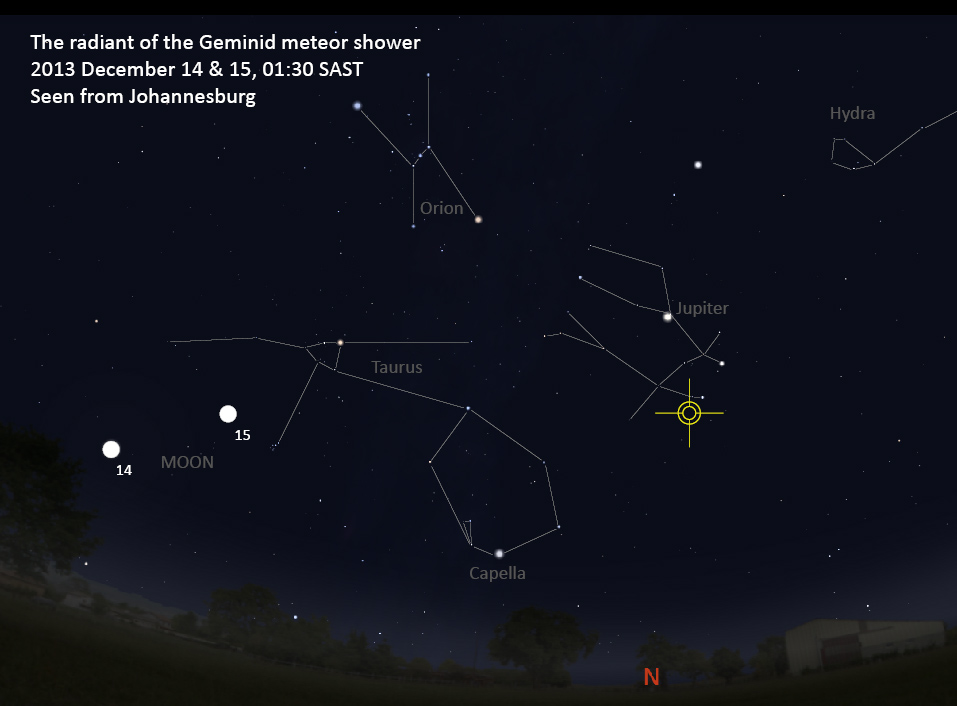At least two meteor showers are active this month – the Geminids and the Puppid-Velids. Grab a deck chair, some coffee, and you may catch a fireball or three from the Geminids. Experienced observers, or those up for a challenge, can help sort out the complex Puppid-Velid activity.
Geminids
The Geminids are the debris stream from minor planet 3200 Phaethon, which may be an example of an extinct comet. Despite being a northern hemisphere shower the Geminids produce a reliable display each year, and are usually the strongest meteor activity of the year even in the southern hemisphere. Maximum typically occurs during the night of December 13/14 (Friday night/Saturday morning).
The radiant lies at RA 07h 28m, +33° 50′, near Castor (alpha Geminorum), and is dramatically marked in the diagrams. The first shows the view from Cape Town, the second as seen from Johannesburg.


When to observe:
- midnight Friday 13th to daybreak Saturday 14th
- midnight Satuday 14th to daybreak Sunday 15th
The activity profile is skewed, with a slower rise to maximum and a rapid drop in activity thereafter. The particles in the stream are mass-sorted, with the Earth encountering smaller particles earlier in the apparition. This means that the average brightness of the meteors increases towards and even after maximum. While rates on the night of December 14/15 are likely to be lower, the average Geminid meteor is likely to be brighter on this date.
The shower is too low for observation before about 23h30 SAST, so is best observed after midnight. The Moon will interfere significantly during 2013; it is Full on the 17th. On the morning of maximum, December 14, the Moon sets at around 03:00 (local time Johannesburg) leaving a narrow window of only half an hour to experience maximum under dark skies.
The IMO 2013 Calendar notes:
“Even from more southerly sites, this is a splendid stream of often bright, medium-speed meteors, a rewarding event for all observers… Near-peak rates usually persist for almost a day, so much of the world has the chance to enjoy something of the Geminids’ best.
“The shower’s peak this year has a waxing gibbous Moon to contend with, and while casual sky-watchers should still be able to see enough of the brighter Geminids to entertain them in the moonlight, dedicated meteor observers must make the best of the brief dark-sky spell between moonset and dawn on the maximum night.”
For a northern-hemisphere perspective, read this article at Sky & Telescope.
Puppid-Velids
There are a number of radiants active during December and January from the general direction of Puppis and Vela, many of which are unconfirmed and scattered over a wide expanse of sky.
Activity of individual radiants probably varies from year to year from inactive to low activity, seldom much higher than the sporadic background, and therefore they need specialist observation through accurate plotting.
Those who really wish to contribute to elucidating this complex can ask and I will provide more information and plotting maps (you can’t use normal maps like those from Norton’s for example). The duration of the meteor shower is from the 5th December through to the 7th January, peaking around the 29th December.
Tips on meteor observing
Besides just kicking back and relaxing and enjoying a natural show, you can also take part in a scientific investigation and provide raw data to help unravel the mysteries of the meteors. The IMO (International Meteor Organization) has a comprehensive introduction to visual meteor observing.
